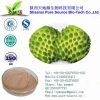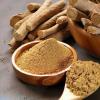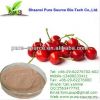Colombo,Western Province,Sri Lanka Sri Lanka
Contact Person Jayantha
Address Colombo, Western Province, Sri Lanka
Contact Now Rate this company Report Fraud Hawthorn Fruit P.E. Hawthorn Extract Pure natural plant extract
Hawthorn Fruit P.E. Hawthorn Extract Pure natural plant extract
 "Premium Chickpea Protein Isolate � 90% Pure, Vegan & Gluten-Free
"Premium Chickpea Protein Isolate � 90% Pure, Vegan & Gluten-Free
 100% Natural botanical extracts Graviola Extract
100% Natural botanical extracts Graviola Extract
 100% NATURAL BURDOCK ROOT POWDER / HIGH QUALITY & NUTRITIOUS SUPERFOOD / VALUE PACK DEAL
100% NATURAL BURDOCK ROOT POWDER / HIGH QUALITY & NUTRITIOUS SUPERFOOD / VALUE PACK DEAL
 10:1 cherry extract/10:1 cherry powder/10:1 acerola cherry extract
10:1 cherry extract/10:1 cherry powder/10:1 acerola cherry extract
 2012 Hot Sales Cheap Highlight Long Round Flower Pots
2012 Hot Sales Cheap Highlight Long Round Flower Pots
 2013 Hot Sales Durable Highlight Round Flower Pots
2013 Hot Sales Durable Highlight Round Flower Pots
 2013 Hot Sales Durable Highlight Square Flower Pots
2013 Hot Sales Durable Highlight Square Flower Pots
 2013 Hot Stainless Steel Flower Planter / Flower Pot
2013 Hot Stainless Steel Flower Planter / Flower Pot
 Acer truncatum seed oil with nervonic acid 5%
Acer truncatum seed oil with nervonic acid 5%
Coco peat usually shipped in the form of compressed bales, briquettes, slabs or discs, the end user usually expands and aerates the compressed coco peat by the addition of water. A single kilogram of coco peat will expand to *5 litres of moist coco peat. Coco peat is used as a soil additive. Due to low levels of nutrients in its composition, coco peat is usually not the sole component in the medium used to grow plants. When plants are grown exclusively in coco peat, it is important to add nutrients according to the specific plants' needs. Coco peat from Sri Lanka and India contains several macro- and micro-plant nutrients, including substantial quantities of potassium. Coco peat is not fully decomposed when it arrives and will use up available nitrogen as it does so (known as drawdown), competing with the plant if there is not enough. Poorly sourced coco peat can have excess salts in it and needs washing (check electrical conductivity of run-off water, flush if high). It has a similar action exchange capacity to sphagnum peat, holds water well, re-wets well from dry and holds around ***0 times more air than soil. Common uses of coco peat include: As a substitute for peat, because it is free of bacteria and most fungal spores, and is sustainably produced without the environmental damage caused by peat mining. Mixed with sand, compost and fertilizer to make good quality potting soil. Coco peat generally has an acidity in the range of pH - 5.5 to 6.5. It is a little on the acidic side for some plants, but many popular plants can tolerate this pH range. As substrate for growing mushrooms, which thrive on the cellulose. Coco peat has high cellulose and lignin content. Coco peat can be re-used up to three times with little loss of yield. Coco peat from diseased plants should not be re-used. Being a good absorbent, dry coco peat can be used as an oil absorbent on slippery floors. Coco peat is also used as bedding in animal farms and pet houses to absorb animal waste so the farm is kept clean and dry. Coco peat is hydrophilic unlike sphagnum moss and can quickly reabsorb water even when completely dry. Coco peat is porous and cannot be overwatered easily.
Contact Now| Business Type | Others |
| Website | N/A |
| Year Established | 2003 |
| Number of Employees | 26-50 |
| Main Markets | Worldwide |
| Products / Services | coir blocks,coco coir blocks,coir fibre pith bales |
| Factory Location | N/A |
| Factory Size | N/A |
| No. of Production Lines | 0 |
| Total Annual Purchase Volume | N/A |
| No. of R&D Staff | N/A |
| Quality Control | N/A |
| Certificates | N/A |
| Contract Manufacturing | N/A |
| Registered Capital | N/A |
| Ownership Type | N/A |
| Legal Representative / CEO | N/A |
| Export Percentage | N/A |
| Total Annual Sales Volume | N/A |
| No. of QC Staff | N/A |
| Contact Person | Jayantha |
| Company | LAL COIR (PVT) LTD |
| Telephone | ******** |
| Mobile | ******** |
| Fax | ******** |